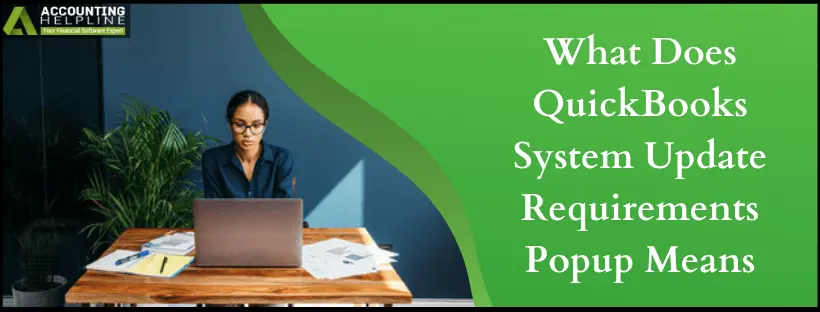Last Updated on March 10, 2025
After updating the QuickBooks application to the latest version, upgrading system components is also required. A new security upgrade alert popup reported by many QuickBooks Desktop users says, “Security update required.” Due to a new security protocol, it’s critical to update your version of QuickBooks. If you are also getting a “QuickBooks System Update Requirements” message in QuickBooks, then follow the complete article until the end for a solution.
If you’ve already made this update, please disregard this message. It is critical to get this security update, or you might not be able to use some essential features of the QuickBooks Desktop application. You must be very careful while updating the system components, as it is a critical task, and a single mistake can cause data loss.
Here, we suggest you call Accounting Helpline Toll-Free Number 1.855.738.2784 to get connected with an expert who will help you update the QuickBooks application and system components.
Why Am I Getting the QuickBooks System Update Requirements Message?
A QuickBooks Desktop system update requirements popup message can mean several things, including:
Your QuickBooks needs an Update.
QuickBooks Desktop will automatically download the latest updates when they are available. The QBDT update status is displayed in the status bar at the top right corner.
You Don’t Have the Required Permissions.
If you receive a message that says, “There’s a new QuickBooks software update waiting for you. It looks like you don’t have the needed permissions,” you can try running QuickBooks Desktop with administrative rights.
What Critical Features will be Affected if the Application Does Not Meet the Minimum System Configuration:
- Activating the QuickBooks Desktop application on a new system.
- QuickBooks password reset tool.
- Payments
- Payroll
- Online Banking
- Help pages
- VAT e-filing
Why Does QuickBooks Desktop Need a Security Upgrade?
QuickBooks releases maintenance and security updates from time to time to ensure the safety and security of user’s data in the application and for improved user experience. These are not program version updates and won’t affect the current version of your QuickBooks application.
You must download the security updates for QB Desktop to protect your financial information in the following manner –
- QuickBooks Desktop updates help address security vulnerabilities and any bugs and issues in the software.
- A security upgrade ensures password security as it may require users to set up and change a complex password regularly.
- QuickBooks Desktop updates may limit admin user management to those with the highest level of access to protect your essential data from unnecessary access.
System Update Requirements:
First, make sure you have the most recent release of the QuickBooks Desktop application installed on your computer; if not, then download and install the updates in the following manner –
- Download the latest QuickBooks application, or you can upgrade the application by selecting the Update QuickBooks Desktop option from under the QuickBooks Help tab.
- You will need QuickBooks 2017 or later version to get the latest application security updates and to get rid of the QuickBooks System Update Requirements message.
Operating system requirement:
- Windows 7
- Microsoft Windows 8.1
- Windows 10
- Windows Server 2008 R2
- Microsoft Windows Server 2012 R2
- Windows Server 2016
Microsoft Edge Requirement:
- You will need the latest version of Microsoft Edge for quickbooks
- Desktop uses Edge browser settings and features to connect with the internet.
- Download the latest Microsoft Edge from Here.
Net Framework 4.5.2 or later version:
- You will need the Microsoft .Net Framework version 4.5.2 or later installed on your computer.
- Download the latest version of the .NET Framework here.
- After the download completes, click the setup file from the downloads and install the Framework by following the on-screen instructions.
Restart your computer, and if you face any issues installing the .NET Framework, contact us at 1.855.738.2784 for professional assistance.
What are the System Update Requirements for QuickBooks Desktop 2024?
If you want to upgrade your QB application to QuickBooks Desktop 2024, the following system requirements must be fulfilled –
- The operating system requirements include a 64-bit Windows operating system. Remember, the QuickBooks Desktop 2024 version will not run on a 32-bit OS.
- A strong and reliable internet connection is required at least once every 14 days to sync license information.
- The processor requirements include a 2.4 GHz processor.
- At least 8 GB of RAM is required for QBDT 2024, and 16 GB is recommended.
- The disk space should be at least 2.5 GB, and you may require more space for data files.
- A display optimized for 1280 x 1024 resolution or higher is needed, along with two extended monitors.
- The software requirements include Microsoft .NET 4.8 Runtime, which is provided with the installation files.
- You must ensure the internet security and firewall settings do not interfere with the QBDT updates. To ensure zero blockage, ports 80 and 443 must be enabled, and access must be provided to the necessary .exe files.
Steps to Fix Issues with QuickBooks Update Requirements
If the system requirements are met but you still get the QuickBooks update requirements message, you can follow the steps mentioned below –
Check for the latest updates –
You must ensure that QBDT is updated to the latest release, and if not, follow these steps –
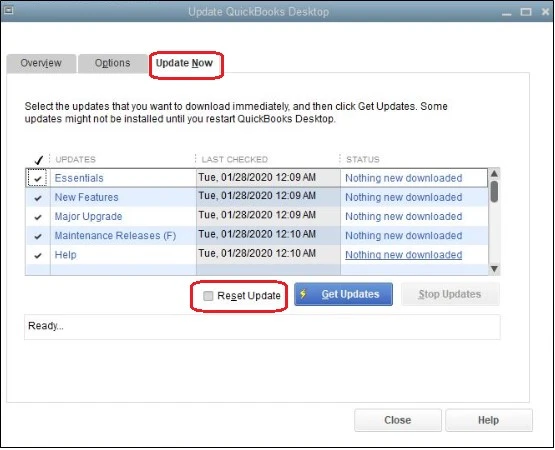
- To check for recent updates, go to the Help menu and select the Update QuickBooks Desktop option.
- Click Update Now, then select the updates to install and click the Get Updates option.
- Finally, wait for the update process to complete, post which you will see a confirmation message.
Run the QuickBooks Install Diagnostic Tool –
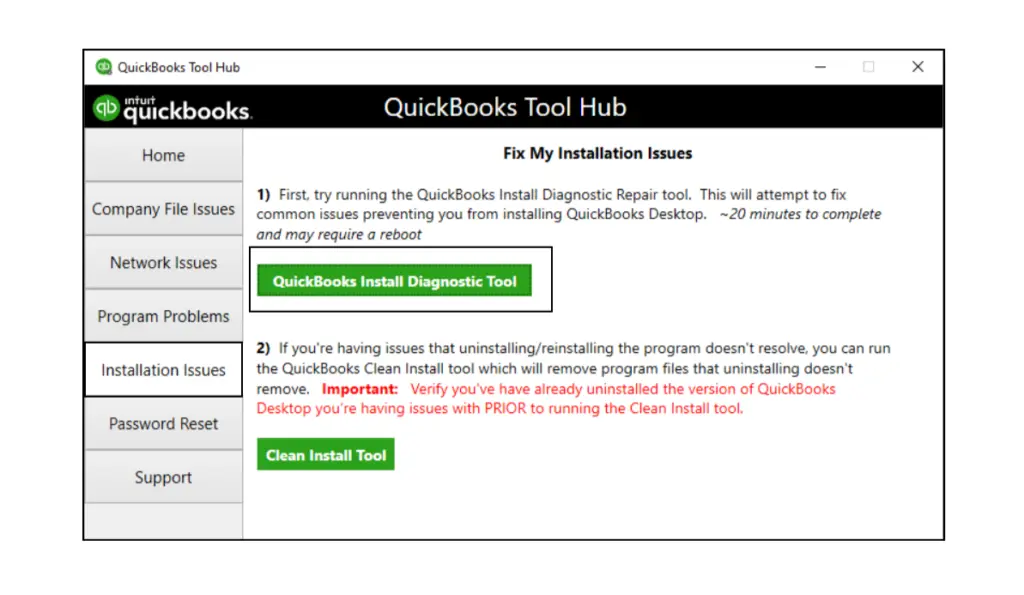
This tool can be accessed from the Installation Issues section of the QuickBooks Tool Hub. It can help run a scan process and fix common installation issues.
Repair your QBDT Installation –
You can manually repair your QuickBooks installation in the following manner –
- Open the Windows Start menu and access the Control Panel, then select the Programs and Features menu.
- Now, select your QBDT version from the program list, then click the Repair option to initiate the repair process.
Reinstall QuickBooks –
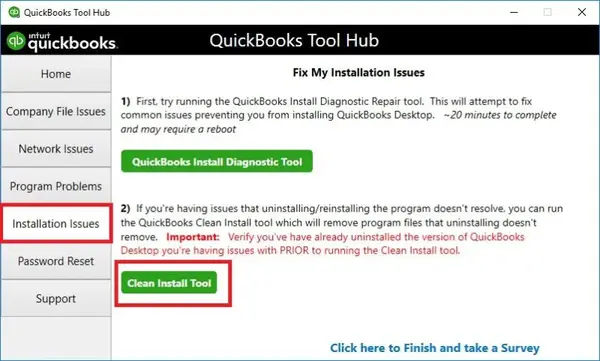
If repairing QuickBooks doesn’t help, you can uninstall and reinstall QuickBooks using the QuickBooks Clean Install tool. The tool will install a new version free of the installation issues in the current QBDT version.
Check your system date and time –
An incorrect date or time can interfere with the update process, which can be fixed by setting the correct date and time as follows –
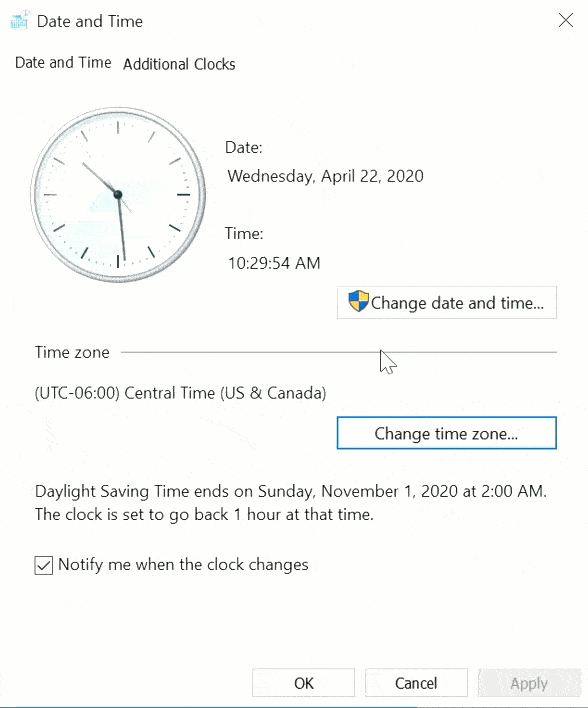
- Open the Windows Start menu, then select Time & Language from the Settings tab.
- Now, click Date & Time and the correct date and time, then save the settings and exit the page.
Check your Windows firewall configuration –
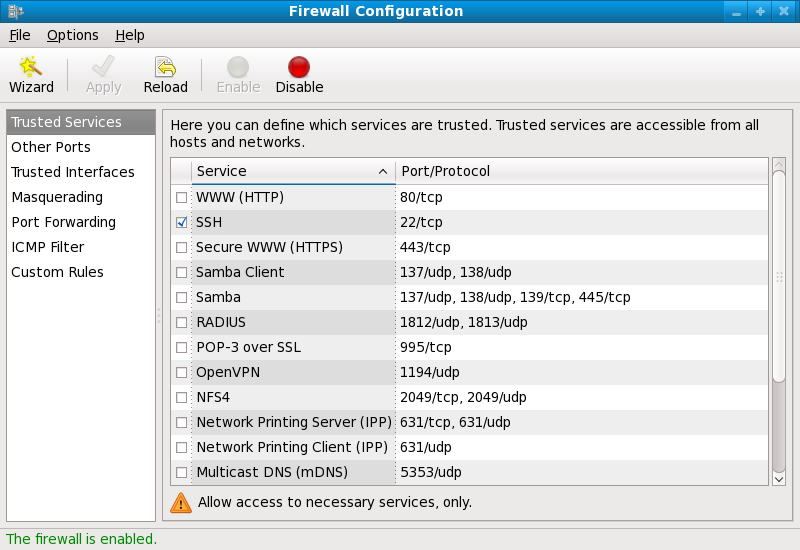
Sometimes, the Windows firewall creates blockages that cause QuickBooks Desktop update issues. If you’re having trouble with your firewall, you must configure the Windows firewall settings to allow QuickBooks without restrictions.
Download a manual update –
If you have more than one version of QuickBooks Desktop installed on your PC, you can download and install a manual update for one or more QBDT versions.
Check your company file –
If you’re using QuickBooks Desktop Enterprise, check your company file for data damage before installing the latest software update as follows –
- Log in to QuickBooks as the Admin, go to the Company menu, then select Users and click Edit the Admin user.
- Remove special characters from the company file name, ensure the extension is .QBW, and exit and restart QuickBooks.
- Now, go to the File menu and run the Verify Data tool from the Utilities tab. If the data is in good condition, you will receive the “QuickBooks detects no problem with this data file” message on your screen.
- If the data integrity is compromised, run the Rebuild Data tool from the Utilities menu to rebuild the damaged data.
Use the QuickBooks Tool Hub –
If none of the above solutions work, you can access other tools in QuickBooks Tool Hub to fix common QB issues. One of these tools includes the Quick Fix My Program tool of the Program Problems tab.
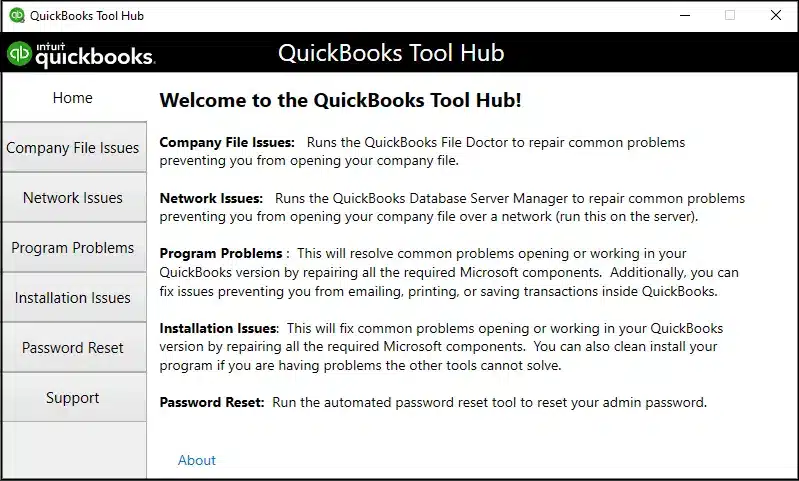
Alternatively, you can use the TLS 1.2 Readiness tool to make the system TLS 1.2 compliant and automatically update all the components in the following manner –
- Open the QB Tool Hub, then go to the Installation Issues section and select the QuickBooks TLS 1.2 tool from the bottom-right corner.
- Click OK and select Yes to accept the EULA agreement, then click Run.
- Once the TLS 1.2 tool stops, click Exit and end the process.
Once done, check if the QuickBooks update and system update requirements popups have been removed and if you have the latest QBDT updates and fixes.
Conclusion
The information in this detailed guide will help you address the QuickBooks system update requirements message. If you have also received a popup of security upgrade alert like “QuickBooks System Update Requirements” or “Security Update Required! Due to a new security protocol, it’s critical to update your version” and you are looking for an expert to help then call Accounting Helpline Support Phone Number 1.855.738.2784.
FAQs
Do I really need to update my QuickBooks Desktop version?
If you are a QuickBooks Desktop 2021 user, consider upgrading to a newer version of QuickBooks Desktop, like QBDT 2023 or 2024. Since Intuit is discontinuing older versions of QB Desktop on a rolling basis, upgrading to a new software version will ensure you are supported for a little longer.
How can I stop QuickBooks from asking me to update?
You can disable auto-update in QuickBooks Desktop 2023 in the following manner –
– Open the Update QuickBooks Desktop window, select Options, and locate the update folder under the Download Location section.
– Delete the folder’s contents, deny write permissions to the folder, then apply the changes and exit.
What happens if I don’t update QuickBooks?
If you don’t update QuickBooks, you can lose access to some services, including technical support, security updates, integrated services, and other add-on features.

Edward Martin is a Technical Content Writer for our leading Accounting firm. He has over 10 years of experience in QuickBooks and Xero. He has also worked with Sage, FreshBooks, and many other software platforms. Edward’s passion for clarity, accuracy, and innovation is evident in his writing. He is well versed in how to simplify complex technical concepts and turn them into easy-to-understand content for our readers.
